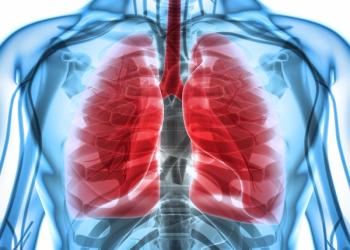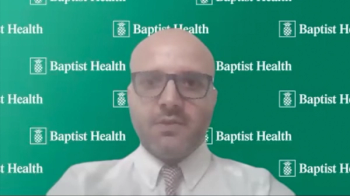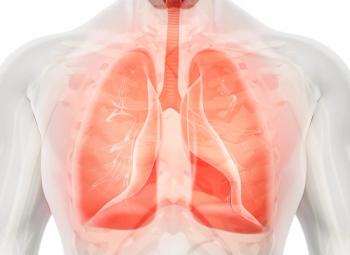
Revumenib Improves MRD-Negativity and Procession to HSCT in R/R Acute Leukemias
For patients with relapsed or refractory KMT2Ar acute leukemia, revumenib showed promising outcomes of overall response rate and duration of response.
Results from an updated analysis of the phase 2 AUGMENT-101 trial (NCT04065399), found that, in patients with relapsed or refractory KMT2Ar acute leukemia, revumenib (Revuforj) elicited percentages of procession to hematopoietic stem cell transplant (HSCT) and higher minimal residual disease (MRD)-negativity rates.1
Further, the study, which was presented at the
“This trial represents the largest evaluation of a targeted therapy for patients with relapsed/refractory KMT2Ar acute leukemias to date, including the largest pediatric menin inhibitor cohort,” Ibrahim Aldoss, MD, associate professor, Department of Hematology & Hematopoietic Cell Transplantation, City of Hope National Medical Center, Duarte, California, said during a presentation of the longer follow-up. “…Revumenib is the first approved menin inhibitor and first approved treatment for KMT2Ar acute leukemia.”
Response to Revumenib
As of the data cutoff of February 29, 2024, the overall response rate (ORR) was 63.9% (95% CI, 54%-73%), including a complete remission (CR) or a CR with partial hematologic recovery (CRh) rate of 22.7% (95% CI, 14.8%-32.3%) and composite CR (CRc) of 42.3% (95% CI, 32.3%-52.7%).
Of 18 CR+CRh responders and 36 CRc responders who were evaluable, 11 (61.1%) and 21 (58.3%), respectively, experienced MRD negativity.
Further, median duration of response (DOR) for the 22 CR+CRh responders was 6.4 months (95% CI, 1.9-not reached [NR]). In total, 8 patients remain in follow-up without relapse or death. Aldoss noted that the updated median DOR of CR+CRh for the 13 patients who responded to revumenib treatment in the interim analysis2 was 13.0 months (95% CI, 3.4-NR).
The median time to first response in all responders was 1.0 month (95% CI, 0.9-3.1), and was 2.0 months (95% CI, 0.9-4.6) in CR+CRh responders.
Overall, 21 patients (33.9%) in the ORR cohort went on to receive HSCT, of which 9 (42.9%) of them restarted treatment with revumenib after a median of 70 days (range, 35-182). Of the patients who went on to receive HSCT, 9 of the 11 CRc responders and 4 of the 6 CR or CRh responders with MRD status available were negative.
No New Safety Signals
Grade 3 or higher treatment-emergent (TEAEs) or treatment-related adverse events (TRAEs) occurred in 91.4% and 54.3% of patients, respectively, of which 77.6% and 36.2% were serious. TEAEs led to dose reduction in 9.5% of patients and discontinuation in 13.8% of patients, while TRAEs led to reduction and discontinuation in 8.6% and 5.2%, respectively.
The most common grade 3 or higher TEAEs were febrile neutropenia (38.8%), anemia (19.8%), decreased platelet count (16.4%), differentiation syndrome (14.7%), decreased neutrophil count (14.7%), decreased white blood cell count (14.7%), sepsis (13.8%), and QTc prolongation (12.9%). No new safety signals were reported, and no patients discontinued treatment due to cytopenias, differentiation syndrome, or QTc prolongation, Aldoss said.
Unmet Need in Acute Leukemias
Aldoss noted that treatments are needed for KMT2Ar acute leukemia, as many patients relapse after chemotherapy and/or HSCT, with remaining remission rates in both adults and pediatrics remaining low.
Therefore, in the phase 2 AUGMENT-101 trial, investigators evaluated the safety and efficacy of the oral, small molecule menin inhibitor.
Patients received 163 mg (95 mg/m2 if body weight <40 kg) every 12 hours orally plus a strong CYP3A4 inhibitor in 28-day cycles until lack of at least morphological leukemia-free state after 4 cycles, disease progression, or unacceptable AEs.
CR and CRh rates, as well as safety and tolerability served as the primary end points. Secondary end points included the rate of CRc (defined as CR plus CRh plus CR with incomplete platelet recovery plus CR with incomplete count recovery), ORR, DOR, and time to response.
Patients were eligible with the following criteria: age of 30 days or more; relapsed/refractory acute myeloid leukemia, acute lymphoblastic leukemia, or mixed-phenotype acute leukemia with KMT2Ar or NPM1m; and patients with primary refractory or relapsed refractory disease. Patients were excluded if they had active central nervous system disease.
Among the patients in the efficacy (n = 97) and safety (n = 116) analyses, median age was 37 years (range, 0.6-75.0) and 35.5 years (range, 0.6-75.0), respectively, with the majority of both groups being in the age range of 18-65 years (67.0% and 63.8%). Over half of both groups were women (56.7% and 57.8%, respectively) and were White (71.1% and 69.0%).
According to the abstract, patients underwent a median of 2 prior therapies (range, 1-11), with 51 (44%) receiving 3 or more prior lines, 73 (63%) receiving prior venetoclax (Venclexta), and 59 (51%) who underwent prior HSCT.
Aldoss concluded by noting that the independent NPM1m cohort results from the trial will be presented in future publications.
Reference
- Aldoss I, Issa GC, Blachly JS, et al. Updated Results and Longer Follow-up from the AUGMENT-101 Phase 2 Study of Revumenib in All Patients with Relapsed or Refractory (R/R) KMT2Ar Acute Leukemia. Presented at: 2024 ASH Annual Meeting; December 7-10, 2024; San Diego, California. Abstract 211.
- Syndax Announces Pivotal AUGMENT-101 Trial of Revumenib in Relapsed/Refractory KMT2Ar Acute Leukemia Meets Primary Endpoint and Stopped Early for Efficacy Following Protocol-Defined Interim Analysis. Syndax Pharmaceuticals, Inc. Published: October 2, 2024. Accessed: December 7, 2024. https://www.prnewswire.com/news-releases/syndax-announces-pivotal-augment-101-trial-of-revumenib-in-relapsedrefractory-kmt2ar-acute-leukemia-meets-primary-endpoint-and-stopped-early-for-efficacy-following-protocol-defined-interim-analysis-301943954.html.
Newsletter
Stay up to date on recent advances in the multidisciplinary approach to cancer.



















































































